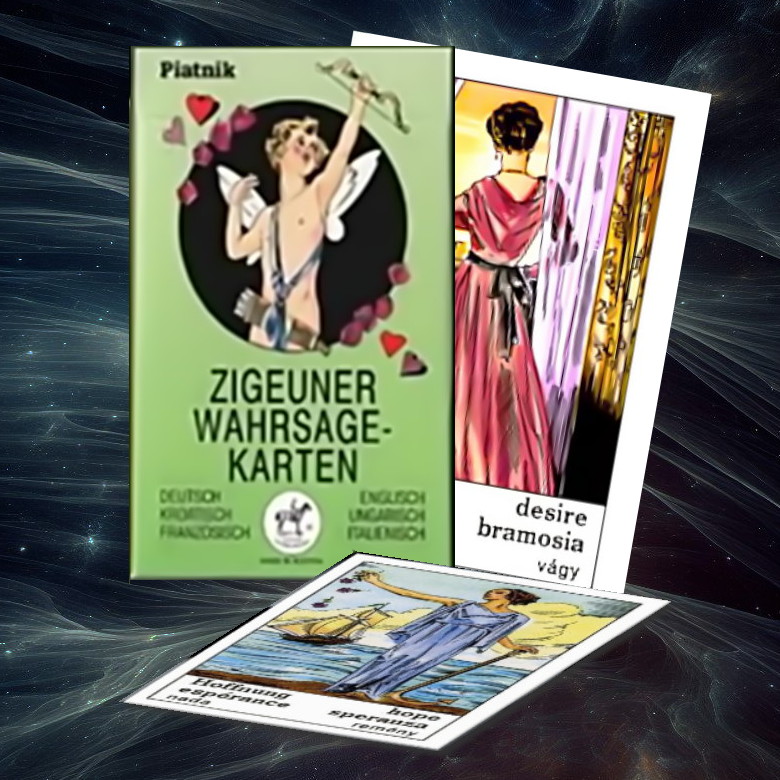ZIGEUNER WAHRSAGE KARTEN 36-CARD TAROT
Gypsy Tarot cards have been used for centuries as a tool for guidance and self-reflection. The rich symbolism found in the imagery of the cards can offer insights into the complex facets of life, from personal growth to navigating challenges. By reflecting on the cards and their meanings, individuals can gain perspective on their circumstances, leading to a more harmonious and fulfilled existence. It's a practice that encourages introspection and can be a comforting aid during times of uncertainty.
The Austrian Gypsy cards contained in Piatnik series No. 1901 and 1904, 36 cards lend themselves well to use by those who would like to start or those who are experienced tarot readers. 36-card tarot/oracle deck with descriptions of each card in English, French, Deutch and Hungarian. The boxed Gypsy card includes is a little booklet for different spreads and some information in four languages. This gypsy tarot, also known as Zigeuner Wahrsage-Karten, translates to Gypsy cards have very nice cards the illustrations very bright and easy to read.
PRICE: 28.00AUD

